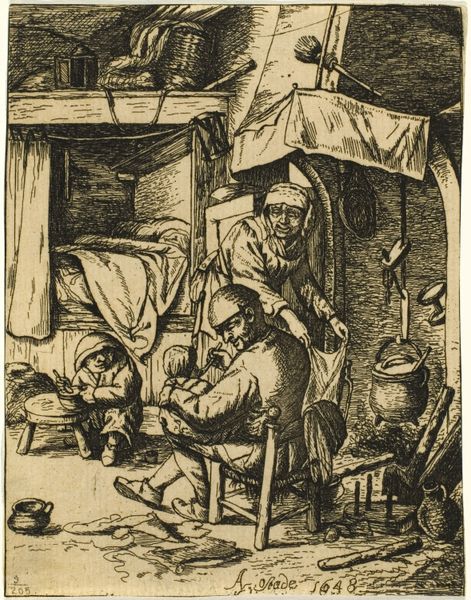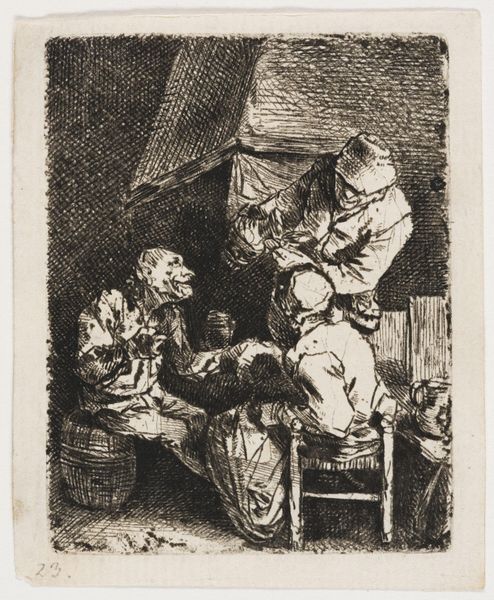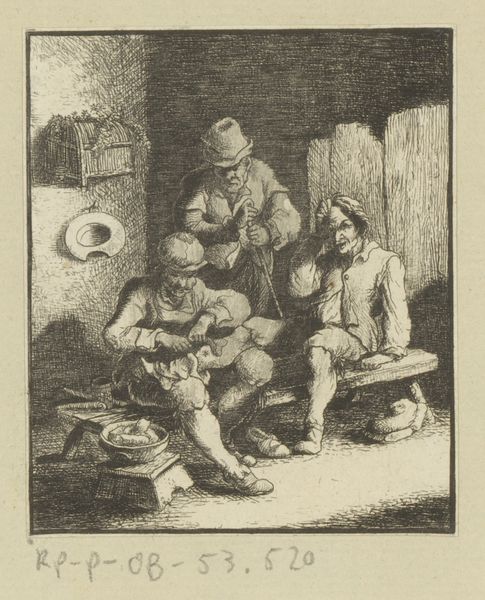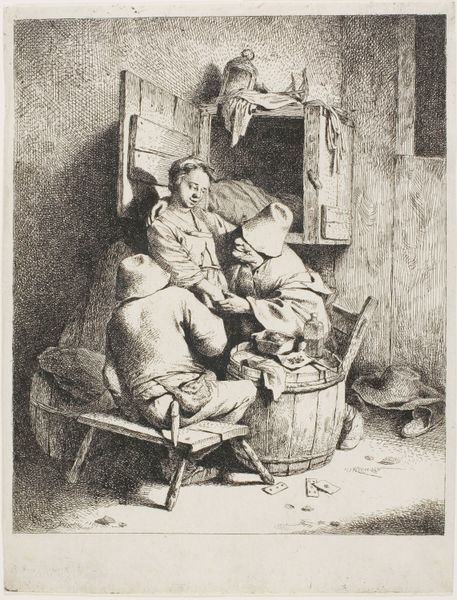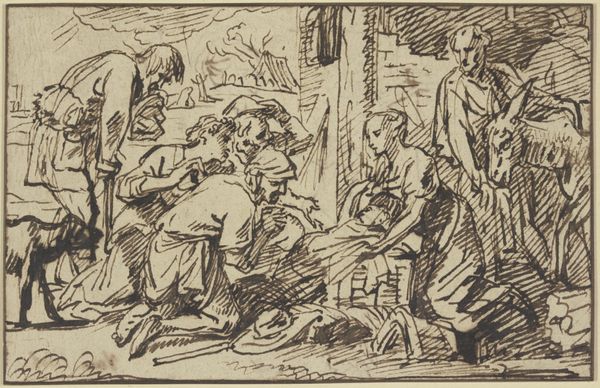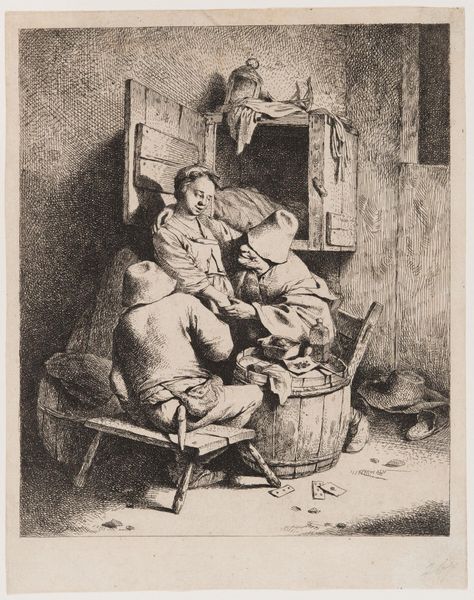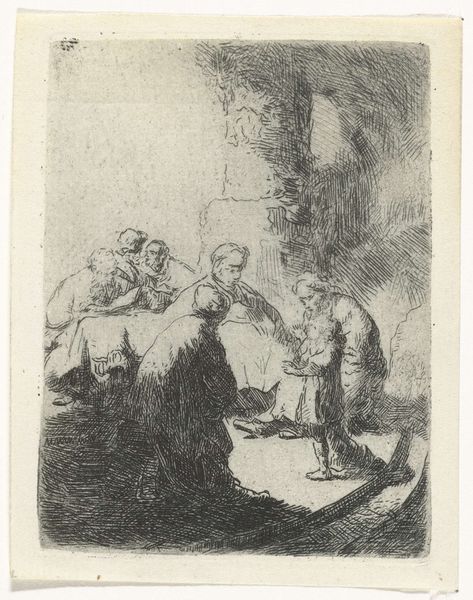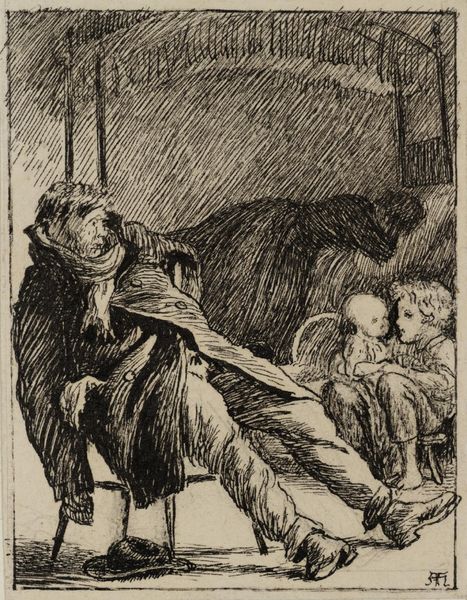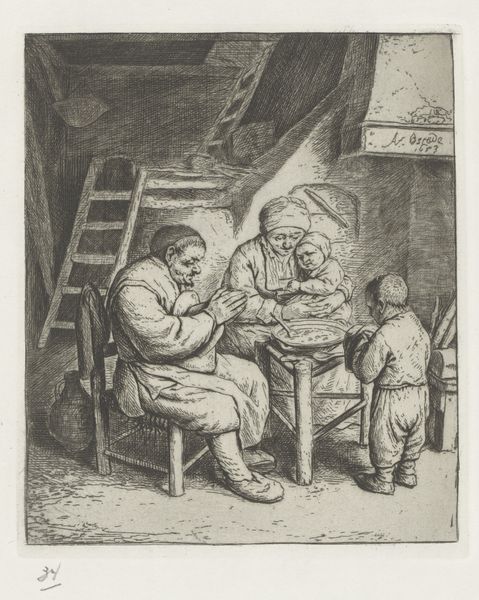
drawing, print
#
drawing
#
dutch-golden-age
# print
#
figuration
#
genre-painting
#
realism
Dimensions: Sheet: 4 13/16 × 3 15/16 in. (12.3 × 10 cm)
Copyright: Public Domain
Curator: This print, held here at the Met, is titled *Father Feeding Child* by Adriaen van Ostade. It likely dates sometime between 1610 and 1685, and is an example of Dutch Golden Age realism. What strikes you about it initially? Editor: The darkness, definitely. A claustrophobic kind of domesticity, almost. Everything is crammed into a small space – a family struggling in what appears to be very modest circumstances. You immediately read into their economic and social position. Curator: Absolutely. Van Ostade often depicted scenes from everyday life, especially among the working classes. His genre paintings and prints, like this one, offer insights into the lived experiences of ordinary people in 17th-century Holland. The composition centers on the father figure, his posture suggests that nurturing children doesn’t always have to conform with what society typically dictates of gender norms, though perhaps in a less self-aware way than is expected nowadays. Editor: But doesn’t the sentimental feel obscure other nuances, what it truly meant to be working class? Is Ostade engaging in something akin to today’s “poverty porn,” profiting off of these images of otherness? It might romanticize their condition, obscuring systemic inequalities and the historical contexts in which people lived during this time period. The scene makes a spectacle of poverty under the guise of domesticity, or “realism” as such. Curator: That’s a fair point. It raises critical questions about representation, doesn’t it? Though this could be construed to depict their class plainly, maybe it invites us to confront our own biases, and acknowledge the universal realities of humanity even within dire material conditions. I think that by scrutinizing imagery like this with a sharp analytical lens, we're able to expand historical understanding into richer territories. Editor: That said, it still strikes me as voyeuristic, no matter how sensitively done. It reflects a certain perspective that remains tied to social and political agendas that often further separate those on top, looking down on those that they perceive at the bottom. Curator: Thank you for your candid take. Ultimately it prompts us to examine whose stories get told, how, and why.
Comments
No comments
Be the first to comment and join the conversation on the ultimate creative platform.
